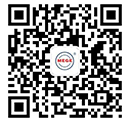Rolling Bearing Performance Rating Parameters Review and Engineering Assessment
09 Feb,2021
The main function of rolling bearings is to support load and transmit rotational movement with minimum energy loss. In order to achieve this, bearings are manufactured with particularly good quality fatigue resistance materials, proper design and tight manufacturing tolerances. Particular emphasis is put in both the macro, and micro geometry of the working shapes and surfaces of the raceways. Rolling bearings come in many types and sizes as ball and roller bearings for radial and thrust loads. For many years, the selection of the proper bearing for an application has relied on the matching of two main aspects:
An adequate definition of the performance rating parameters related to the actual manufacturing process and quality of the bearing, usually performed by the bearing manufacturer.
An adequate definition of the operating conditions and of the safety factors of the particular application, usually performed by the application engineer.
The first aspect requires: i) a quality control and assurance system during manufacturing process, and ii) a methodology for the assessment and validation of the performance parameters that are applied to bearing products. Usually this is done using load rating models that are validated by dedicated tests of the product.
The second aspect requires measurements, experimentation and good engineering knowledge of the specific application. This includes: i) dynamic load variations and transient conditions, and ii) the effect of the environment that may influence the performance of the bearing in use.
The current paper focuses on the first aspect of the engineering selection process, critically reviewing the methodologies that are applied in bearing performance rating and their relation to bearing manufacturing quality and experimental validation.
International standards are very important here. A frequently employed standard is the ISO 281 (Ref. 1) which establishes the definitions of the dynamic load ratings of rolling bearings. This standard provides the methodology for the simple calculation of dynamic load capacity of rolling bearings based on the main geometrical parameters of the bearing and standard high quality material.
However, the standard has important limitations that users often overlook. The standard applies only to good quality bearings. In other words, bearings that represent the “status of the art” of rolling bearing manufacturing technology. In practice, this means, by quoting the standard: “rolling bearings manufactured from contemporary, commonly used, high quality hardened bearing steel, in accordance with good manufacturing practices.” Unfortunately, no quantitative measure of this definition of bearing quality is given in ISO 281. This, in turn, let the undifferentiated application of ISO performance parameters and dynamic load ratings to the large variety of rolling bearings that are produced today.
Verification of the ISO 281 dynamic load ratings would require the use of proper, statistically meaningful, endurance testing of rolling bearings population samples to determine the life L10. However, standards of bearing endurance testing for the verification of dynamic load ratings of rolling bearings are not part of ISO or any other standard. This leads to the present situation in which bearing manufacturers typically apply ISO ratings to describe the performance of their products. However, only very few, generally well-established companies with a long tradition in quality and testing, actually verify the performance parameters of their products by means of dedicated endurance testing (Ref. 2).
Today mechanical engineers have to decide choosing a bearing among different manufacturers. In some cases, significantly different load ratings for seemingly similar bearings type and size are given without a clear explanation of the reasons behind the applied load ratings or whether or not these values are routinely supported with a quality control system and endurance testing practices. This situation is further complicated by the fact that, given the very high costs involved in bearing fatigue life testing, the results of endurance testing are usually proprietary information of the bearing manufacturer that is not released into the public domain.
This paper addresses these issues by reviewing the calculation methodologies of the most relevant load rating parameters of rolling bearings. Their definition, origin and significance in terms of fatigue life of the bearing are clarified. Verification methods of these performance parameters are also discussed. This includes the required endurance testing and the basic statistics that are used in this field.












